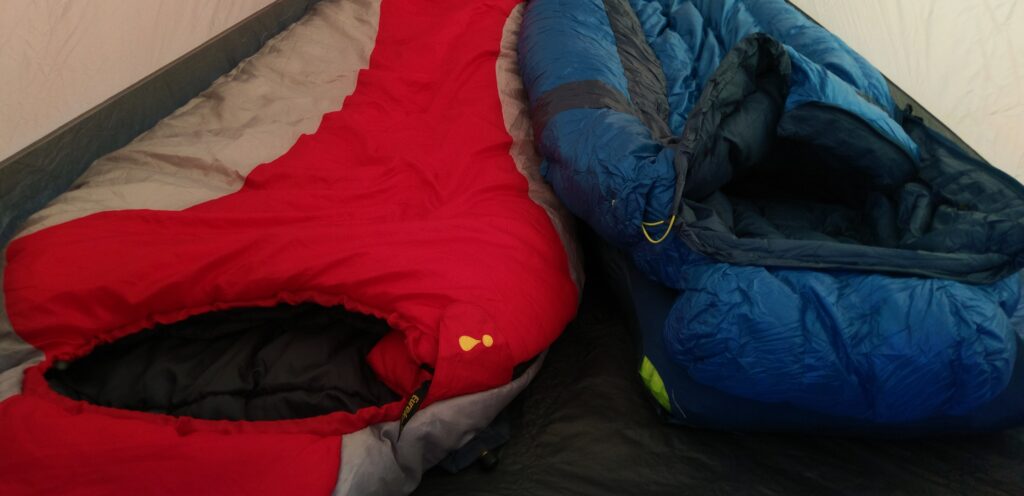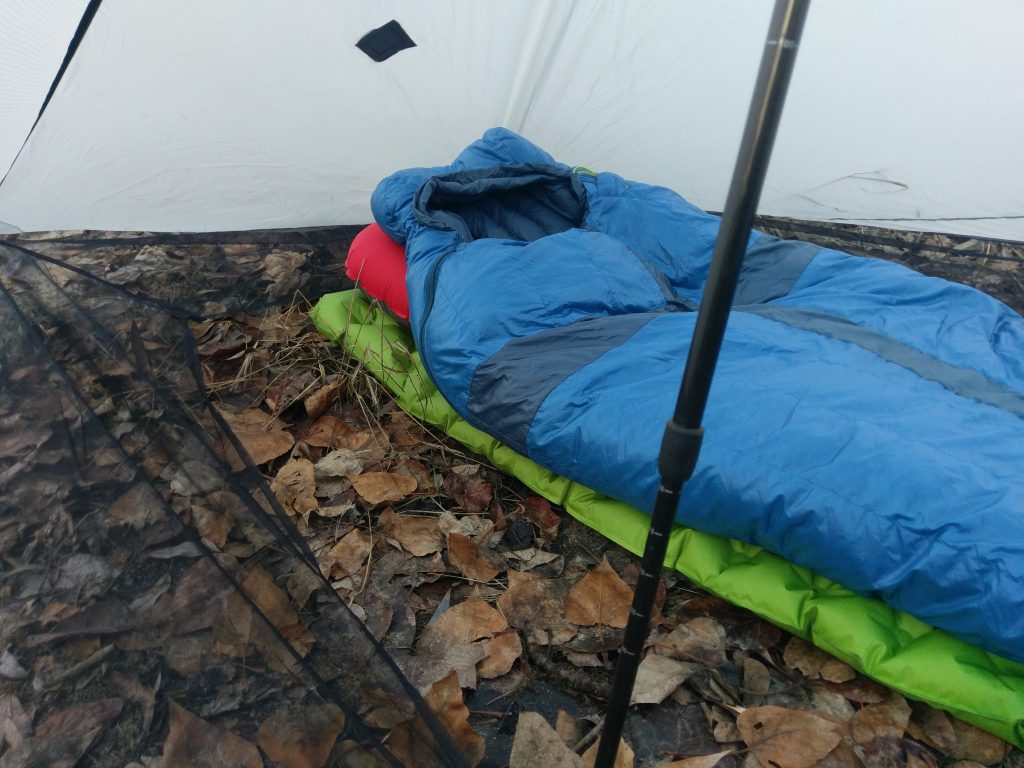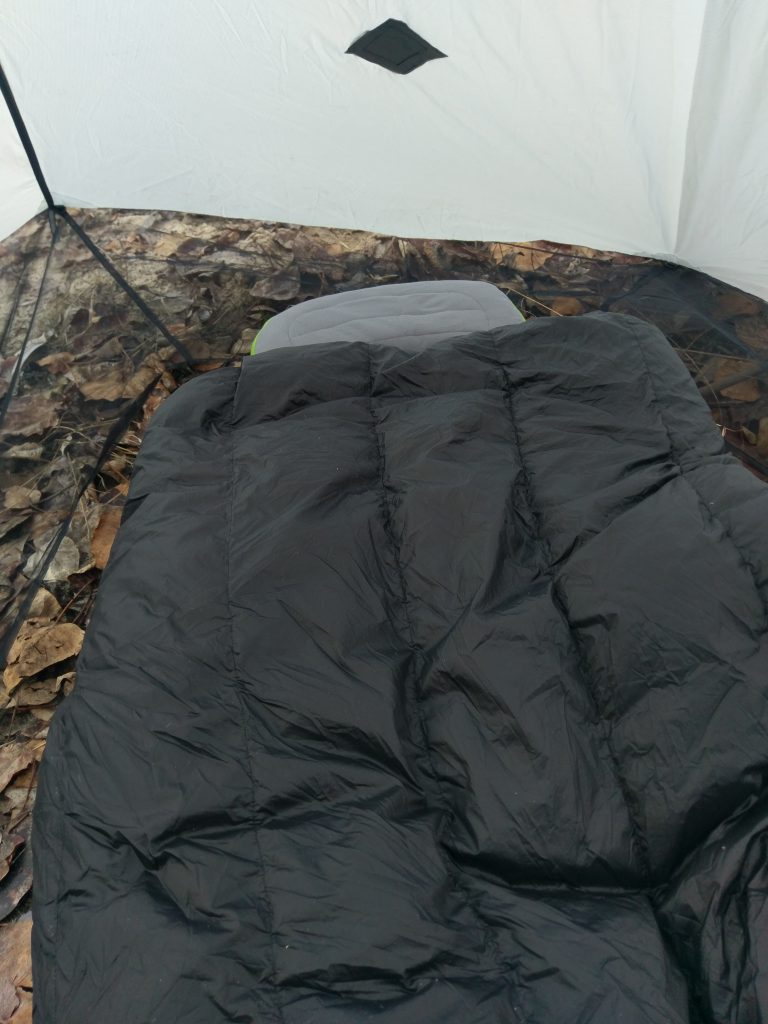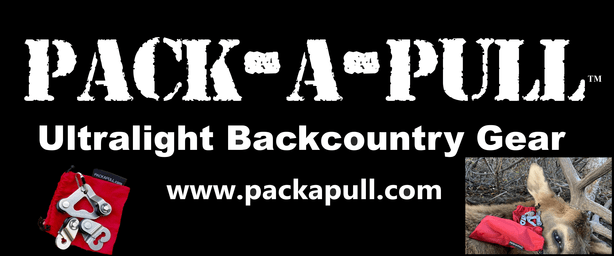What are some of the best ultralight sleeping bags? There are so many to choose from! How do you decide between down or synthetic? What style of sleeping bag is the right fit for you? Do you prefer a sleeping bag or a quilt? And what’s all the rage about quilts anyway? The market is full of good quality, ultralight sleep systems. When discussing sleep systems, it’s extremely difficult to report as to whether the bag/quilt lived up to its temperature rating because everyone sleeps differently.
My experience with each of these ultralight sleeping bags may be entirely different than yours, so I’ll offer my test results for effectiveness against the stated temperature ratings based on my testing. For reference, I’d say that I am an average sleeper as far as temperature is concerned. I know that’s entirely subjective, so take it for what it’s worth.
Ultralight Sleeping Bags: Temperature Ratings
A lot can be said about the temperature ratings a company gives their sleeping system. What is an EN rating? Some give “lower limit” ratings, and some don’t. Meanwhile, customer reviews are typically all over the place as far as whether the bag lives up to its warmth rating.
Ultralight Sleeping Bags: EN Ratings
The “EN rating” for an ultralight sleeping bag stands for the “European Standard” rating based on a standardized laboratory test. It was created in 2005 to give standardized temperature ratings based on a set of controlled, consistent factors. This test assumes the user is a 25 year old, 5’7″ man weighing 161lbs or a 25 year old, 5’2″ woman weighing 132lbs.

EN ratings are broken down into 4 distinctions:
Upper Limit – upper limit of comfort without excessive perspiration
Comfort – range where you can expect to sleep comfortably
Lower Limit – lowest temperature where a standard male can sleep in a curled up position without waking
Extreme – minimum temperature that a standard female can rest for 6 hours without risk of death (but hypothermia is still possible).
NOTE: The above designations assume the user is wearing thermal underwear, using a sleeping pad, and is in a tent.
Based on the above ratings, you clearly don’t want to purchase a sleep system where the temperatures you will be experiencing will be anywhere close to the “Extreme” rating. My general experience with sleeping bags/quilts is that I add about 10 degrees to whatever the “Lower Limit” rating is before I start feeling a bit of a chill. This could be just me, but I’ve heard a similar sentiment time and time again.
Down vs. Synthetic Ultralight Sleeping Bags

The first order of business in putting together your sleep system is deciding what insulating material will best fit your use. Most sleep systems today are made from either a down or synthetic fill. As a general rule, down will compress down smaller, weigh less, and last longer than a synthetic insulation. The primary issue with a down bag has traditionally been the fact that down loses its insulating properties when wet. This can lead to, at best, a terrible night’s sleep in the back country. For this reason, if you find yourself in wet weather often, synthetic is usually the better choice.
In recent years manufacturers have made huge strides with treated down, providing a water resistant property that allows the down to retain a respectable amount if its insulating properties when wet. Treated down also dries faster than untreated down. Down-filled options are typically much more expensive than synthetic, but does outlast synthetic in the long run.
Ultralight Sleeping Bags: Packability

Simply put, synthetic just doesn’t compress as much as down, taking up more space in your pack. The primary advantages to synthetic are that it performs better when wet and is much more affordable. For these reasons, we generally recommend down over synthetic unless you know you will be in very wet conditions.
Down Terminology
Down comes in “fill powers” generally from around 500 up to 950. The higher the fill power, the less down needed to accomplish the targeted temperature rating, thus saving weight and increasing packability. Goose down is typically more efficient (and more expensive) than duck down. Fill power simply means the number of cubic inches of loft per ounce the down will produce. The highest quality down is more expensive, but packs down smaller while requiring less of it to accomplish the same temperature ratings as a lower fill power down.
Loft
Another thing to consider when purchasing a down bag or quilt is the loft. This is something that is best observed in person as it’s very tough to tell how well a bag lofts in pictures. The easiest way is to head to your local retailer and lay out as many bags with the same (or very similar) down fill and comfort ratings and see which one provides the most depth when fully lofted (give the bag/quilt some time to loft if it’s been compressed).
Another consideration is how fast a bag will loft after being compressed. While this one is very difficult to test without purchasing, a general rule is that the higher the down fill (quality) the faster the bag will fully loft after being compressed
Ethically Sourced Down
Keep an eye on the source of down the company uses. Most manufacturers now proudly display that they use ethically or responsibly sourced down. Some companies, like Sea to Summit, even give you a certificate of the ethically sourced down used in your bag.
Synthetics
Because the focus of this review is down sleep systems, I won’t spend a lot of time on synthetic insulation, but similarly, synthetic fill comes in varying qualities, brands, and effectiveness. Some pack smaller and are lighter than others. As a general rule, you get what you pay for in the quality of the insulation. Companies like Thinsulate are continuously improving synthetic insulation, making it warmer and lighter than the previous version.
Ultralight Sleeping Bags
The standard for a long time has been the sleeping bag. Sleeping bags for the backpacker often come in a couple of sizes and shapes: “mummy” or “fitted” bags; “standard” or “relaxed;” and “oversized”. When picking a size, consider what you can tolerate and how much you move around at night.
Mummy bags
Typically mummy bags are the most efficient and light weight due to the tight fit with no dead space for your body to heat. If you can’t sleep feeling restricted or confined, these might not be the best option for you.
Standard Bags

Standard bags are a good mix of light weight without being too restrictive. You will be able to move around more freely in this style bag but also may notice more cold spots because your body is required to heat more air inside the bag. These tend to be a bit heavier than a mummy bag, but the weight penalty is worth the comfort if you can’t do a mummy bag.
Oversized bags
These bags are by far the most comfortable if you toss and turn or need to spread out when you sleep. There are some great oversized bags on the market today, but keep in mind that you have a ton of air to heat in an oversized bag, so you will likely experience cold spots. As you would expect, there is a significant weight penalty for an oversized bag. More material and more insulation equal a heavier bag that doesn’t pack down as small.
Ultralight Quilts
Quilts have recently become extremely popular in the backpack hunting community. Why? Quilts offer some impressive features and keep the weight to a minimum. Quilts don’t have an underside to them which allows them to shave dead weight that a sleeping bag adds. The part of a sleeping bag that you lay on offers very little insulation when compressed by your body, so the quilt eliminates that unneeded material and insulation. Keep in mind, that because of this, you will want to make sure to have a quality insulated sleeping pad if using a quilt.
No Hood

Quilts are a sleep system that don’t have a hood, so if using one, you need to be prepared to insulate your head if the temperature drops. This can be done with something like a merino hooded shirt, beanie, or even a Torrid Hood offered by Enlightened Equipment.
Most quilts come with a strap system that attaches the quilt to the pad. I really like this feature, but it takes some experimenting to get use to and figure out what configuration you like best(more on that below).
Quilts offer a ton of versatility as well. There are a lot of configurations, some of which allow you to completely open up the quilt on warmer nights and use it like a blanket, or you can use the pad straps to cinch it up and keep drafts out.
Some love quilts, some hate them. There doesn’t seem to be much middle ground.
Make sure to stay tuned for Part 4 of this series where we review a handful of great ultralight sleeping bags on the market today!
Check out Part 1 of this series on The Basics of Selecting a Backpacking Tent, or Part 2 for our Backpacking Tent Review.
Subscribe to Backwoods Pursuit to get our FREE Backcountry Gear Worksheet!!!
Dial in your gear list, calculate your pack weight, and lighten up your pack with this handy tool!








very clear and good article easy to understand. Thank you
Thank you and glad it was helpful!
What are the key features to look for in the best ultralight sleeping bags?
I look for the bag being nice and compact, lightweight, and true to it’s temp rating. Thanks for reading!